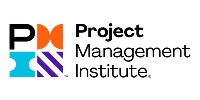Coping with Institutional Complexity and Voids: An Organization Design Perspective for Transnational Interorganizational Projects
Institutional complexity occurs when the structures, interests, and activities of separate but collaborating organizations—often across national and cultural boundaries—are not well aligned. Institutional voids in this context are gaps in function or capability, including skills gaps, lack of an effective regulatory regime, and weak contract-enforcing mechanisms.
This research, drawing on a particular case study of a transnational gas pipeline, looks at the types of institutional complexity and voids faced by transnational interorganizational projects (IOPs) and identifies the form of organizational design that, in this case, was effective in managing and mitigating the challenges to achieve effective project outcomes.

Method Summary
The research draws on an anonymized case study of a gas pipeline project involving four different countries across Asia: the source country where the gas was extracted, two intervening Central Asian countries from the former Soviet bloc through which the pipeline needed to run, and the country where the gas would be used.
There were three forms of data collection: semistructured interviews, internal documents, and public-facing documents. The interviewees were selected by means of a snowball technique. From the managing director of the coordinating organization, who was interviewed first, the researchers obtained referrals to other individuals with supplementary knowledge, who in turn provided further referrals. This enabled navigation of a complex organizational structure through personal recommendation, enabling researchers to build trust with individuals who might otherwise have felt reluctant to participate.
Fifty-five interviews involving staff in different departments and organizations and at different hierarchical levels were recorded and transcribed. Transcripts were triangulated with internal documentary evidence, reviewed sentence by sentence, and categorized, by (1) institutional environment and (2) type of challenge (i.e., divergent goals; nation–dyadic conflicts; financing difficulties; and lack of resources, skills, infrastructure, and equipment).
Key Findings
- Transnational IOPs can be hampered by institutional complexity in the forms of:
o Misalignments and differences in culture across organizations;
o Different priorities and technical norms;
o Variations in legal requirements across different countries; and
o Regulatory red tape. - Transnational IOPs can also be hampered by institutional voids such as:
o Lack of financing mechanisms;
o Weak infrastructure;
o Lack of construction materials;
o Lack of up-to-date equipment that is fit for purpose; and
o Lack of skill and technical knowledge in the workforce. - There is no single overarching system (such as a unified or market-based model) that can regulate transnational IOPs as complex as the one in this study. Instead, a hybrid form of organizing with a modular structure was found to be effective.
- The initiators of the project set up:
o A subsidiary for gas extraction in the source country;
o A coordinating subsidiary (Promoter), which entered into partnerships and joint ventures in the intervening countries; and
o A subsidiary to buy the gas in the end-user country. - Promoter was of pivotal importance in tackling institutional complexity and voids and in managing the division of labor and integration of effort across national borders.
- Promoter’s joint ventures led to the win-win of locally derived benefits, such as land acquisition rights and regulatory know-how, alongside its own ability to procure finance and provide technical/operational skills and equipment.
- Coordination by promoter ensured that once construction was complete the pipeline could be properly operated and maintained, aligning supply and demand.
Practical Implications
- Practitioners should be aware of the impact of institutional environments (institutional complexity and voids) on project organization and should design transnational IOPs accordingly.
- Practitioners should not assume that a simple model (unified or market-based, for example) will be effective in a transnational IOP—more likely, a creative solution will need to be developed, contingent upon project and institutional features.
- The hybrid model worked well in this case study because it:
- Reduced interdependence between countries and organizations;
- Effectively managed the interfaces among different organizations;
- Used bilateral negotiation to shorten the time needed for decision-making;
- Negotiated ways to cut through regulatory red tape; and
- Provided work-arounds for conflicting priorities or interests.
Overall Takeaway
- A hybrid organizational model was found to be effective for managing institutional complexity and voids in this transnational IOP.
- A system integrator (coordinating organization—Promoter) proved pivotal in ensuring
effective interfaces between subsystems and partnerships. - Joint ventures addressed institutional voids and brought complementary advantages
that could be leveraged toward shared goals. - The modular design made institutional complexity manageable, improved efficiency and
strategic flexibility, and reduced the risk of cooperation failures.
Developments Since the Article Was Published
In addition to the initial case study, the authors are currently in the process of compiling a comprehensive dataset encompassing all cross-border oil and gas pipelines constructed since 1990. This endeavor aims to develop a contingent argument of the relationship between technological structure and organizational structure on the organization’s institutional and political environment. Motivating this ongoing study is the mirroring hypothesis that posits that the organization structure tends to correspond to the technical dependencies in the work being performed by the organization because of efficiencies in mirroring the two systems. Unexpectedly, the authors find rare instances where strict mirroring holds. The authors are investigating contingencies that elucidate the strategic choices to break the mirror between the integral architecture of pipelines and the architecture of the organization developing a pipeline.
Further Information
For further information on this and similar projects, please contact:
Yongcheng Fu at tjufyc@gmail.com
Lihan Zhang at zhanglihan1106@163.com
Yongqiang Chen at chenyongqiang@tju.edu.cn
For the full article go to https://doi.org/10.1177/87569728211047318

























































































